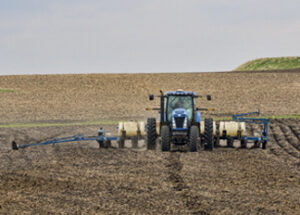
Thorough Planter Check-ups Start the Season Off Right
Time moves faster and faster each year it seems and planting will be upon us soon. As we (hopefully) begin to see warmer weather this month, it is a great time to get the planter out and check things over. Top yields rely on a wide variety of factors, some that we can manage and some we can’t. It is a relatively cheap investment to spend a few hours making sure everything is in working order. Remember there is only one chance to correctly place the seed! Here are some points to remember from Ryan Bergman at ISU.
- Check that the double disk openers are still sharp and within the diameter tolerance specified by the manufacturer. Check the contact point of disk openers by using the business card method. In this method, place a business card at the top and bottom pinch points of the contact area between the two plates. Measure the distance between the cards. It should be about 2 inches. Rotate the disks to try at many points. This will help check of warn/warped disk openers and bearing health.
- Disk openers that are warn to a diameter of 14.5” or less may create a “W” in the seed furrow. This can lead to a planting depth variance of ¾” or more. That is A LOT when it comes to seed depth.
- Adjust the contact between the gauge wheels and the disk openers so the gauge wheels are contacting the disks, but can still be turned by hand with slight pressure.
- Clean seed tube sensors and check the condition of the seed drop tube. If you are using a high-speed planter, check the condition of seed belts or brushes and any wear parts within the cartridge
- Inspect the bearings in the closing wheels. Check the alignment of the closing wheels by setting the planter down and pull it forward 4 or 5 feet. Make sure the closing system wheels are centered over the line that is created on the ground by the double disk openers. When it comes time for closing wheels to be replaced, consider spiked closing wheels. These are designed to help break up possible side wall compaction and aid in seed to soil contact. There are many different styles to speak with your equipment provider about what is compatible with your planter.
- If you do not have the time or ability to go through your own planter, finding someone to do it can be worth the expense. Some estimates are 3-5 bu tied for correct planter settings.
- 2020 was a high pressure year for corn rootworm. If you plan on bringing back planter applied insecticide (which will likely be beneficial this year) schedule time to speak with the insecticide supplier about possible upgrades or calibrations that need to be done.
- In general, GRAPHITE should be used in finger pickup planters, while TALC should be paired with vacuum planters.
